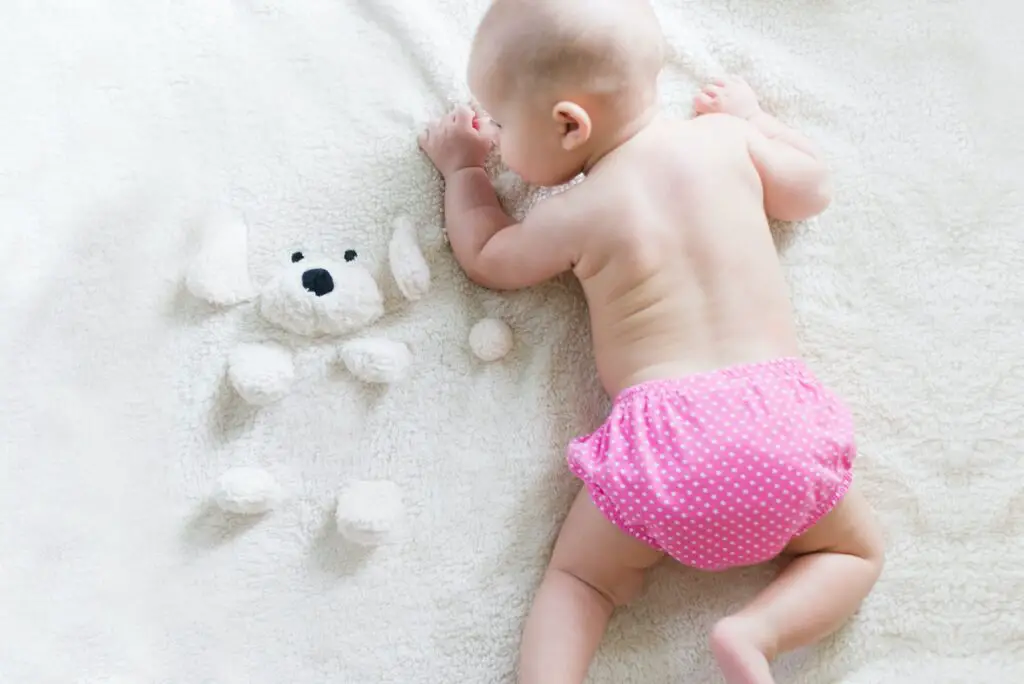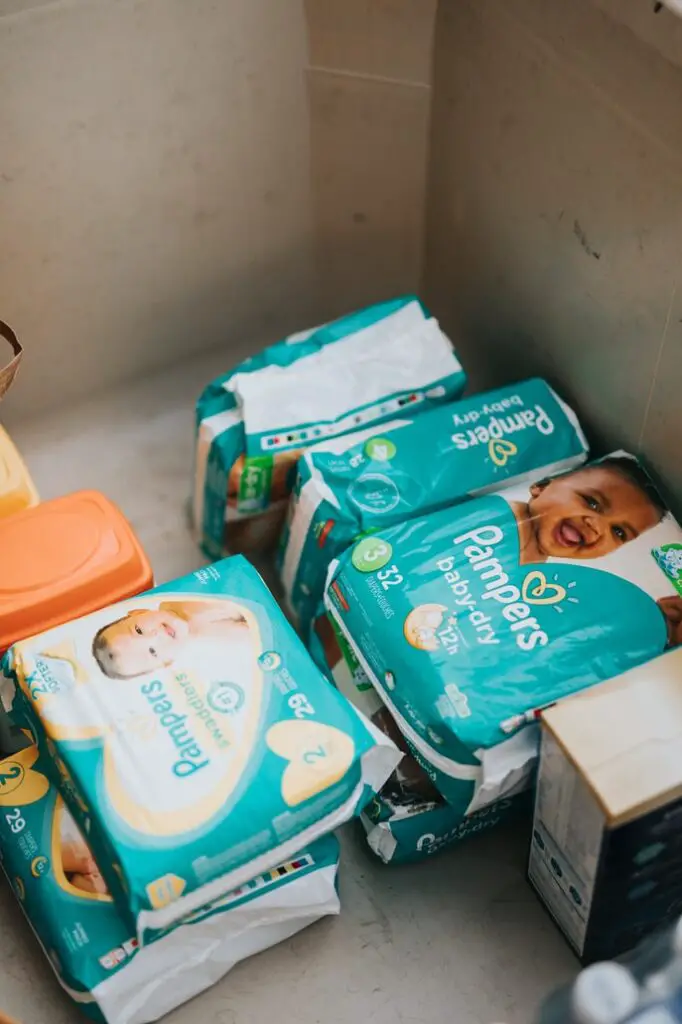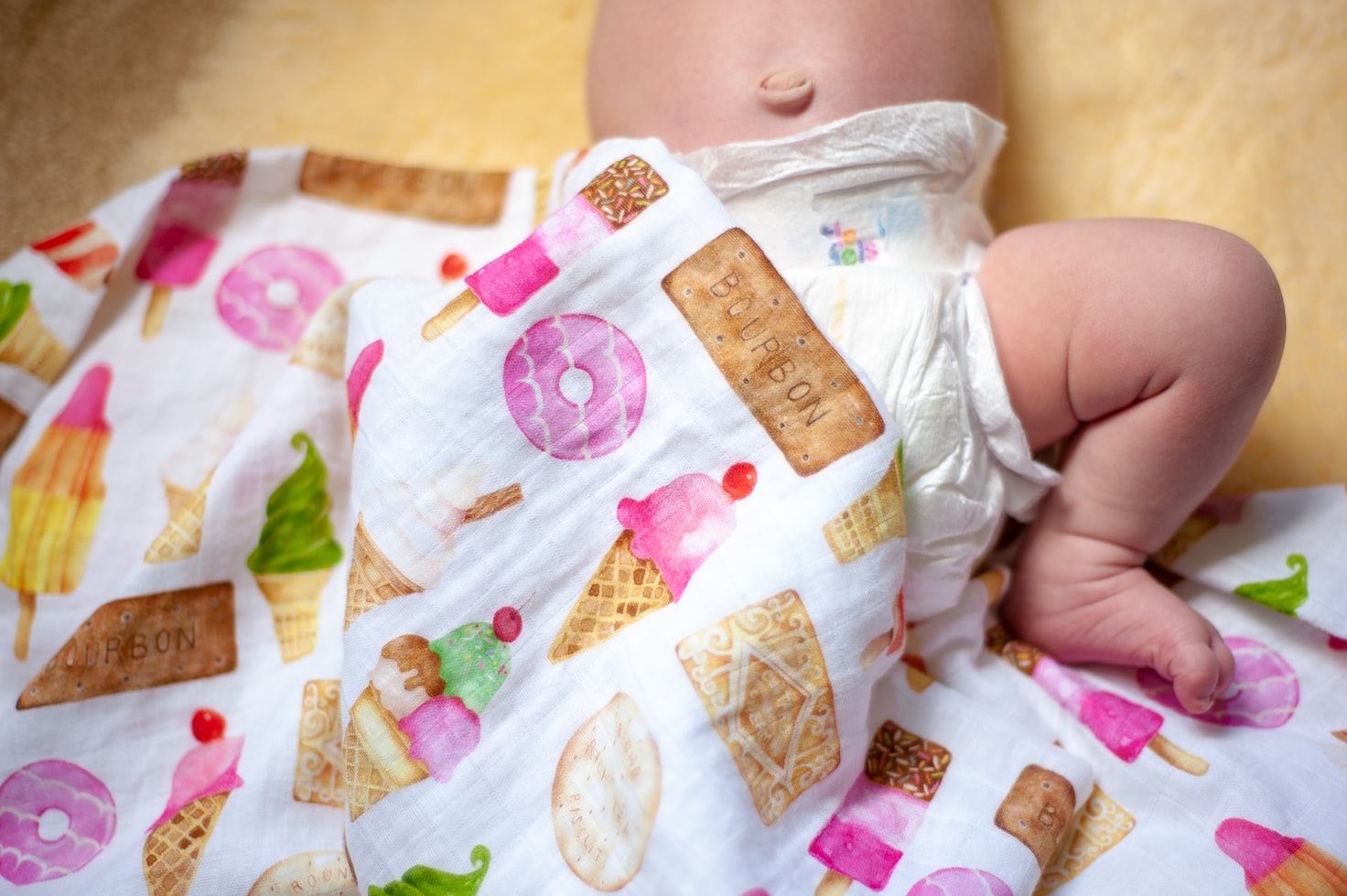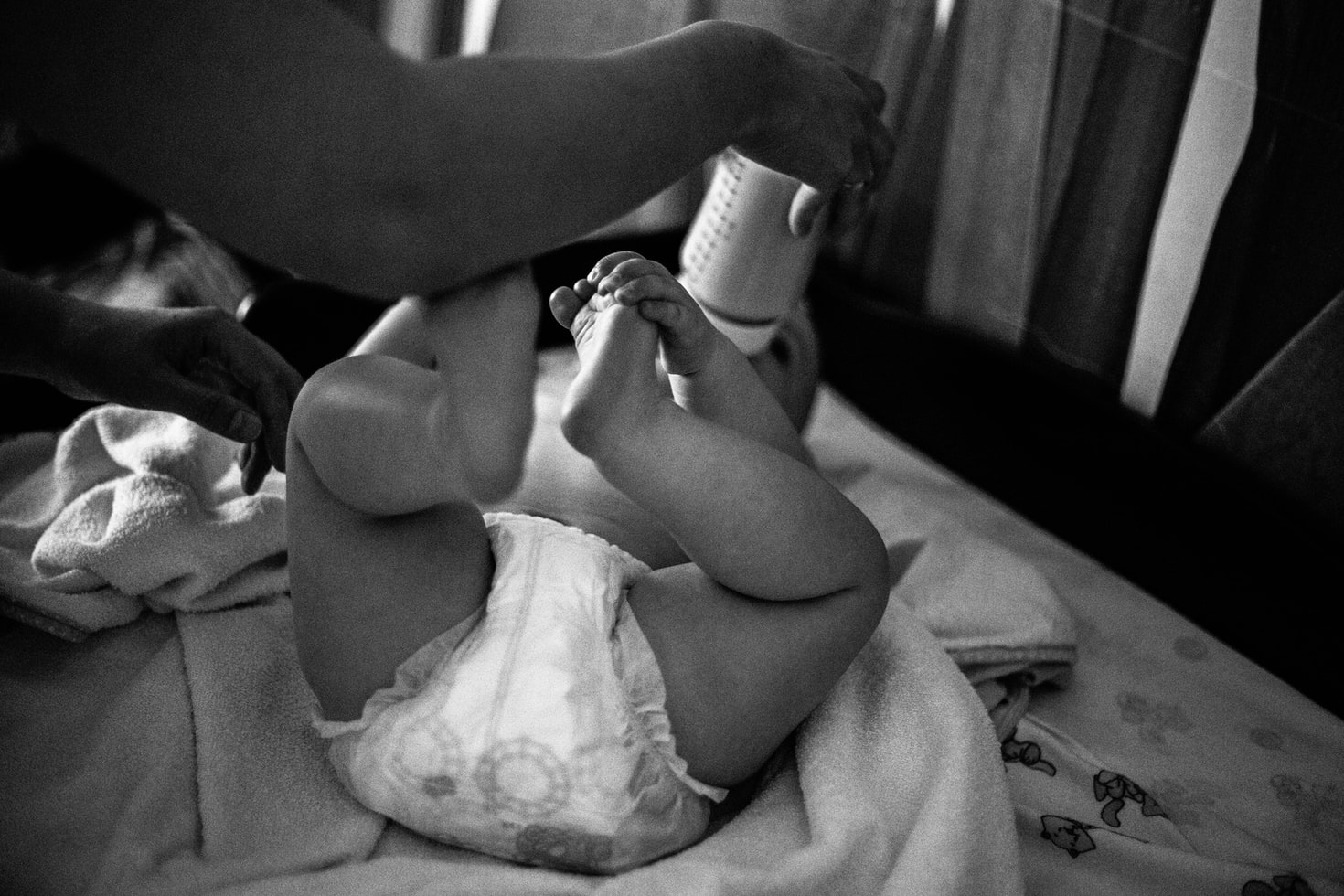How to change diaper is the first skill new parents must master. Parents will change their baby’s diaper around 6,000 times before the child can go to the potty or the toilet. Ready to become a guru in diaper changing? Read our guide!

When is it time for a new diaper?
All you have to do is hold your hand in the child’s crotch: if it feels lumpy or heavy, it’s time for a new diaper. Of course, you can often smell it. Then at the latest, a fresh diaper has to be found.
In the first weeks to months, you need about six to ten diapers a day, with changing at night as well. Later on, around four to six diapers a day are usually sufficient.
Which diaper should you use?
There are a variety of different diapers. For your baby, a diaper must meet three criteria: it must be able to absorb urine and stool well, it must be leak-proof, and it must be comfortable for your darling.
Most commercially available diapers soak up the urine quickly and hold it back in an absorbent core for several hours. This means that your baby’s skin remains largely dry. The absorbent pad also prevents stool from mixing with urine, which minimizes the build-up of ammonia. Ammonia is responsible for a sore bottom and diaper rash, among other things.

As a rule, diapers rarely leak because they have flexible cuffs on the stomach and usually on the legs. This way, the clothes stay dry, and your baby can still move around unhindered.
If the diaper suddenly fills up quickly and even leaks, your baby may need a different diaper size. There are diapers for newborns, babies, and toddlers. Which size you choose depends entirely on the size and weight of your baby.
Changing diapers will undoubtedly be easy for you just a few days after the birth, and you can enjoy the time at the changing table with your darling.
The proper grip for diaper changing:
Grasp the baby’s left thigh with your right hand and bend at the hip joint. The other leg lies on your forearm (do the opposite with your left hand).
This allows you to easily lift and clean your buttocks without putting too much strain on your ankles and knees.
Good to know: In everything you do: look at the baby, talk to him, tell him what you are doing, and – if possible – keep eye contact with the baby as you move.
Important: don’t be overly careful. Grasp the baby with a secure grip.
Changing diapers step by step
Step 1: Carefully and safely place your baby on the changing table and first remove the dirty diaper. If the diaper pail is not right next to the diaper changing area, you should only dispose of the used diaper after diapering.
Step 2 – Version A: Grasp the baby correctly. With the baby’s legs facing you, grab your left thigh with your right hand (1). Your baby’s right leg will then automatically lie on your forearm. Left-handed people use the left hand. Now lift your bottom by carefully bending your hip joint. The spine and neck should not be curved too much.

Step 2 – version B: Roll into the side position. The side position is an alternative when changing diapers. To do this, grab your baby at hip height and carefully roll it onto its side. After cleaning, you simply place the fresh diaper next to your baby and carefully roll it back onto it.
Step 3: Clean the buttocks. You should clean the diaper area thoroughly and gently with each change. The best way to do this is to use lukewarm water and a clean washcloth. Then pat the area dry with a towel.
Step 4: Take care of the skin. A wound protection cream or baby oil can be applied afterward if your baby has sensitive skin or the bottom is reddened.
Step 5: Put on the fresh diaper. Finally, put the fresh diaper on your darling. Make sure it is neither too tight nor too broad – two of your fingers should just fit between the diaper and your baby’s tummy. In the case of a newborn, you should bend the top edge of the diaper or use a special newborn diaper so that the navel can heal better.
When changing diapers, it’s not just about following all the changing steps exactly, it’s also a good opportunity to get in touch with your darling. Your baby will be happy to have your attention. So take your time when you change the diaper and enjoy this special moment with your baby.
Tips for changing a diaper
After opening the diaper, wipe off the coarse stool that remains on the baby’s skin with a clean part of the diaper and dispose of it simultaneously.
The most crucial tip for girls is: clean with a wet, soft washcloth or a damp cloth from front to back. As with adult women, intestinal bacteria can otherwise get into the vagina and, for example, cause bladder infections, among other things. Since there are often stool residues in the outer labia, this region should not be forgotten when cleaning.
When changing boys’ diapers, we recommend placing a cloth on the penis – cold air stimulates the urge to urinate! It is better not to clean the foreskin, as it is usually still firmly glued to the glans, and pulling it back can lead to tears or injuries. As soon as a toddler plays with his penis, the glans and foreskin slowly separate from each other. When this is done, the so-called smegma of sebum, bacteria, and skin residues is deposited. Now the space in between must be cleaned. Otherwise, an inflammation will develop quickly.
After cleaning, carefully pat the delicate skin dry with a soft towel or dry it on the lowest setting with the hairdryer. In the event of skin irritation, wound cream helps to speed up the healing process.
What helps with a sore bottom?
As a preventive measure, skin folds should always be carefully cleaned and dried, advises dermatologist Barbara Kunz. If the skin is already reddened, she recommends zinc ointment, zinc-copper-containing creams, or dabbing with diluted oak bark extract solution.
Most forward-thinking experts advise against the baby powder. The reason? There is a risk that the baby will inhale powder particles, which can lead to acute shortness of breath.
Tip: It is good for the skin if the baby can occasionally kick without a diaper.
How often do I have to change a diaper?
In the first 24 hours after birth, a newborn’s diaper needs to be changed approximately twice. During this time, the so-called meconium goes off – a tarry stool, experts say.
Later on, babies usually have a full diaper six to eight times within 24 hours. Older children need about five to seven fresh diapers a day.
Many babies fill up their diapers during meals. So it’s worth taking a look inside the diaper after you’ve fed your baby. If your baby is hungry and should be swaddled simultaneously, feeding should first have priority.
Of course, you should also listen to your baby’s signals. If the diaper is wet, your baby will call in and will likely cry or whine. You will certainly not always know when the diaper is full. A urine indicator on the outside of certain diapers helps here: It shows when the next diaper change is due.
It is important always to remember to regularly check your baby’s diapers for their contents so that they can be changed quickly if necessary. Stool and moisture can irritate a baby’s delicate skin and lead to sore buttocks.

Changing diapers: tips and tricks
In the course of time, you will definitely become a diaper professional. We have already put together some helpful tips for you here:
- Your baby’s first bowel movement (meconium) is best removed from your bottom with a little oil.
- If your changing area is not in the bathroom, but you still want to wash your baby with warm water, you could place a thermos with warm water and a bowl with washcloths on the changing table.
- Always dry your baby’s bottom thoroughly and gently.
- Regularly check your diaper supply so that you always have enough diapers in the right size to hand for both on the go and at home.
- When a baby becomes a toddler, changing on the changing table could become difficult. Changing diapers while standing or laying down on the floor is an alternative.
- To make sure that you always have everything with you outside, you should equip the diaper bag again after every walk.
- A mobile above the changing table or a small toy can distract your baby when he or she doesn’t like being changed.
Now and then, combine swaddling with a baby massage afterward. Your little one will enjoy it.
DIAPER CHANGING FAQ
Do we need a changing table to change a diaper?
A changing table is convenient, but a table with a support or a changing attachment for the bathtub is also sufficient. The main thing is that you have a permanent place. The changing table should be protected from drafts and direct sunlight. Midwives recommend equipping the changing table so that you always have everything to hand, i.e. diapers, washcloths, a towel, a change of clothes, lukewarm water, or, if necessary, wet wipes. For older children, a small toy is also part of the activity.

How do I avoid dropping the baby from the changing table?
The statistic shows that baby falls from the changing table are still the most common cause of infant injury. In the first months of life, babies make sudden spurts of development and growth, after which they suddenly develop new abilities and can turn on their stomachs from one second to the next without being seen.
Because the falling baby can be dangerous on the changing table, heed the golden rule of sailing: “Always one hand on the ship” and never let go of your baby while changing the changing table while you are reaching for something.
Is swaddling better without wet wipes?
Wet wipes are helpful, but lukewarm water and a soft washcloth will do the same. Midwives advise against using the wipes: Wet wipes clean gently but contain chemicals, fragrance, and preservatives, some of which have been criticized.
Wet wipes don’t work without preservatives. They are necessary to keep germs out when opening and closing the package. If they were left out, mold and dehydration would be the result.
Our tip: put warm water in a thermos at the changing table. Wet wipes – without perfume and alcohol – are a great alternative, especially when you are out and about.
Which clothes are uncomplicated when changing diapers?
Swaddling bodies are recommended for newborn babies because you don’t need to pull them over your head. Trousers and overalls that can be unbuttoned at the crotch are also super practical at the beginning.
Who changes diapers – mom or dad?
Fathers are much more involved these days than they used to be – just changing diapers doesn’t seem to be one of the most popular tasks. According to a survey by the diaper manufacturer Hipp, most dads (43.9 percent) change their babies less than five times a week. Only 13.6 percent said they changed their baby more than 15 times weekly. If you consider that newborns are swaddled about six to seven times a day, most of the work still rests with the mothers.

